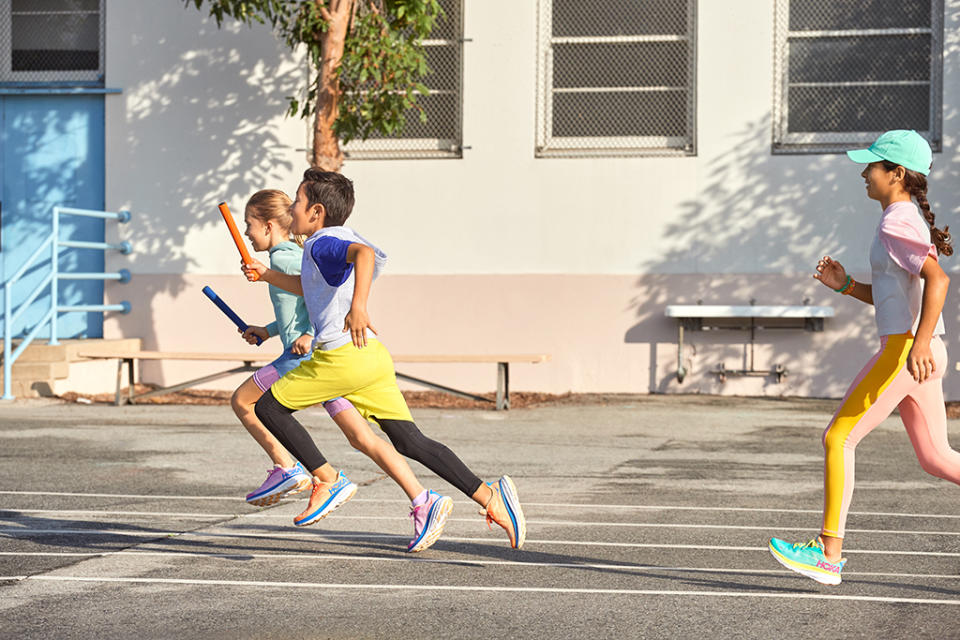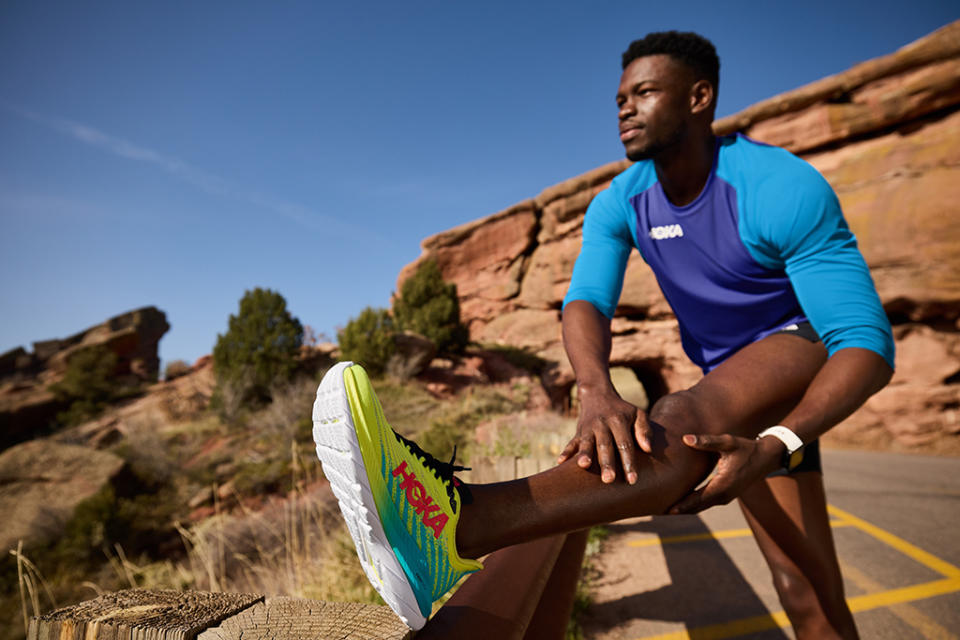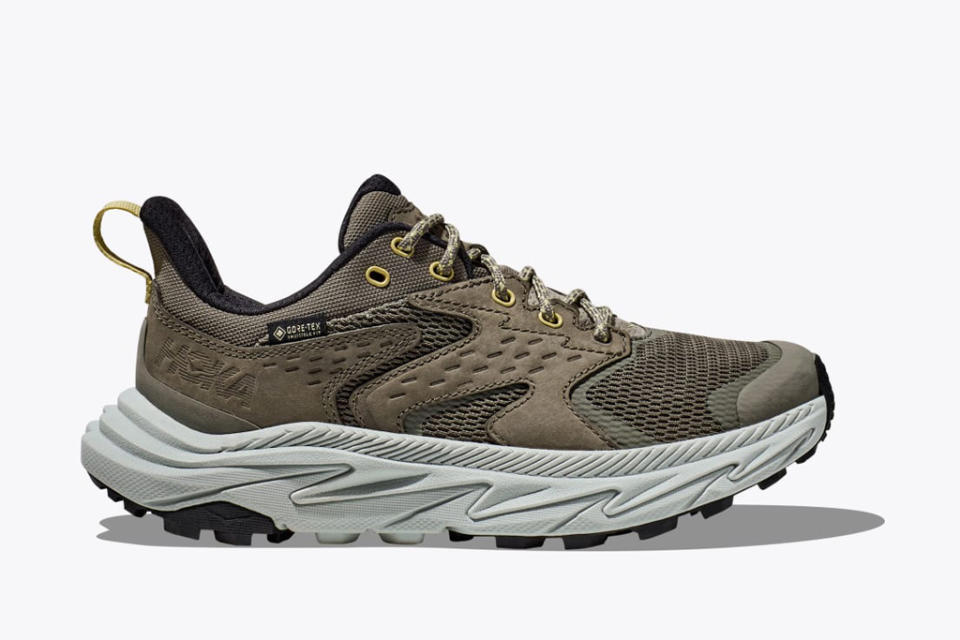Hoka’s Kids’ Collection Is Unlocking New Environmental & Performance Benefits for the Brand

This spring, Hoka introduced its first kids’ collection as part of the aggressive growth strategy of its parent company, Deckers Brands. But the nascent line could have other long-term influences on the athletic brand, especially when it comes to environmental practices.
While developing the youth-oriented versions of its popular Clifton and Speedgoat sneakers, Hoka took a ground-up approach, basing its designs on new lasts modeled after younger feet, said Hy Rosario, product director of outdoor and kids’ footwear at Hoka. It also spent time fit testing and iterating to get the perfect shape and performance.
More from Footwear News
And the team saw an opportunity to embed sustainability in the kids’ products from the start.
Related Stories

Hoka Continues to Grow With Expansion Into Kids’ Shoes

Deckers Brands Is ‘Tightly Managing’ Wholesale for Hoka as It Continues to Build DTC Business
“Trying to unwind unsustainable practices is really, really hard,” said Rosario, who previously was product director at sister brand Teva, where he spent four years shifting its approach. “So from day one, when the idea of Hoka Kids came up, it was clear that we had to approach it with high sustainability.”
In the Clifton 8 Youth and Speedgoat 5 Youth, for instance, the shoes feature recycled polyester laces and linings. And Rosario said the uppers are made with a new, more environmentally friendly weaving technique called anhydrous knitting, where the yarns are dyed directly on the loom.
“Normally the yarn has to be dyed in a water solution, which is really harsh on the environment. There’s a lot of water that’s used and a lot of energy has to go into it,” he said. With anhydrous knitting, Rosario explained, very little water is needed and the dye is as strong as with traditional methods.
However, the new technique is still in its infancy. Rosario said currently half of the yarns are being dyed with this technology and half with the water-based technique. “But our supplier partner is scaling up and in time we will be able to shift to 100 percent of the yarns with anhydrous dye.”

Another eco-conscious feature of the shoes is their midsoles, which are made with a sugar cane EVA that makes up 30 percent by weight. By incorporating bio-based content, Hoka is able to reduce the amount of petroleum-based compounds in the midsole foam. But Rosario said there were other unexpected benefits. “What’s really nice about the sugar cane is it actually gives you a little bit more energy return,” he said.
For a performance footwear brand, that’s a big win. And Hoka is using the learnings from the kids’ collection for its adult offerings.
“The sugar cane technology is coming over to the adult side — and outdoor specifically,” said Rosario. “In fact, we just launched a shoe called the Transport, which has 30 percent sugar cane in the midsole, so we’re migrating a lot more of our shoes over.”
Additionally, for the fall season, Hoka has introduced the Anacapa 2 trail shoe in both adult and kids’ versions, both featuring the sugar cane midsoles. The youth version of the Anacapa 2 Low GTX also boasts other eco-considered features such as leathers from Leather Working Group-certified tanneries and a sockliner containing 50 percent soybean oil.

As Hoka looks to incorporate more environmentally preferred materials into its adult lines, Rosario said the brand is forced to move slow. “When you’re a performance company, the hurdles for performance testing are significantly more challenging than if you’re just making a lifestyle shoe,” he said. “If someone runs a 100-mile ultramarathon and their shoe falls apart, they’re not going to be happy. So the uptake is coming, but we’re doing it in a very considered and measured approach.”
Parent Deckers Brands has set lofty sustainability goals across the company, including an overall reduction in emissions by 2030 in line with the Science Based Targets Initiative. It also aims for 55 percent of all materials in its footwear to be preferred by 2027. According to Deckers’ 2022 corporate responsibility report, the company said it was on track to hit that target, with just over 34 percent of footwear materials qualifying as environmentally preferred as of the end of fiscal 2022.
Rosario said Hoka will continue to collaborate across divisions to share new advancements. “I see a lot of brands doing amazing things on one item, but then you don’t see it anywhere else [in the line]. The learnings aren’t absorbed horizontally across the business,” he said. “I love the two-way cross-pollination that’s going on for the Hoka businesses.”
Best of Footwear News
Sign up for FN's Newsletter. For the latest news, follow us on Facebook, Twitter, and Instagram.

